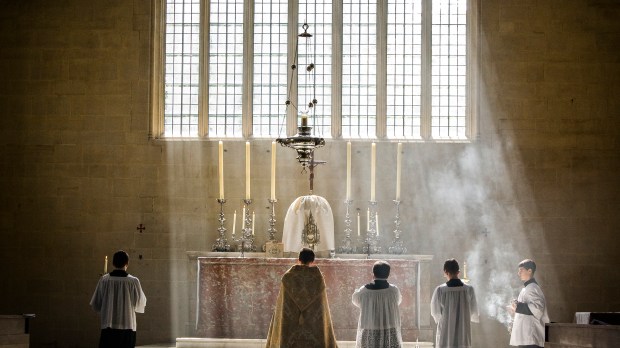And look where you can read all about it: The New York Times.
In August, under a bright blue sky and in front of 2,500 worshipers, Bishop Gregory Ochiagha performed the first traditional Latin ordination in Nigeria since the vernacular liturgy was introduced after Vatican II. Near the end of the Mass, the 86-year-old bishop nearly fainted. “I am so happy, I am so happy,” he whispered as he was led to a chair.
Catholics attached to the Latin Mass have suffered a great deal since the introduction of the vernacular liturgy after Vatican II. But 10 years ago, they enjoyed a sublime vindication. Pope Benedict XVI declared in his document “Summorum Pontificum” that all Catholics have the right to the traditional liturgy. “What earlier generations held as sacred, remains sacred and great for us too,” Benedict wrote. Bishop Ochiagha generously distributed copies of “Summorum” to his brother bishops in Nigeria, many of whom had criticized his support for the Latin Mass.
Though traditionalists remain a tiny minority in Nigeria, as throughout the world, their number is growing. Catholic traditionalists see the ancient language of the Latin Mass as a sign of their faith’s stability and unity, an indication that Christ is the same yesterday, today and tomorrow. They would like to see it return worldwide, but for now, some of its strongest adherents have been in places like Nigeria, where historical tumult and ethnic strife have given traditionalists special reason to value this aspect of their faith.
…When bishops began to discard traditional devotions at the time of Vatican II, the British anthropologist Mary Douglas accused them of turning the faith into an airy set of bourgeois ethical commitments. Liturgical change was a kind of class war. Available statistics bear her argument out: In the United States, Mass attendance remained stable among rich Catholics when the Latin Mass was abandoned, but dipped among the poor.
It is amazing that the leaders of a ritual faith imagined that they could dispense with traditional forms of prayer. Among the few elites who saw the folly of this project, most were artists, naturally alert to the way supposedly superficial things can in fact be essential. In a 1971 letter to Pope Paul VI, artists of all faiths and no faith — figures as varied as Vladimir Ashkenazy, Graham Greene and Agatha Christie — protested that the Latin Mass was a living work of art, belonging “to universal culture as well as to churchmen.”

